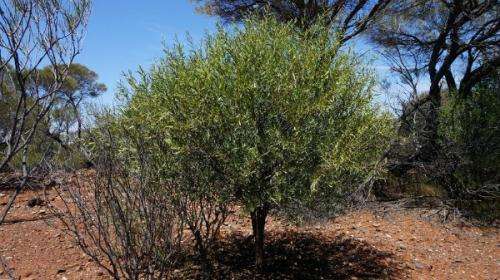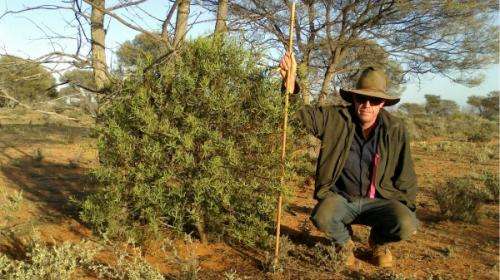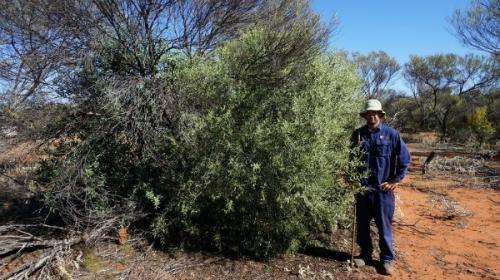Sowing sandalwood seeds bolsters ailing populations

Long-term studies in the Murchison and Goldfields have revealed populations of the aromatic sandalwood tree (Santalum spicatum) are at risk of dying out in some areas.
The 17-year-long study showed the tree's natural regeneration is insufficient to maintain the species, especially in the Murchison.
However, a sandalwood seed enrichment study conducted at the same time provided new hope for the species, with areas sown with sandalwood seed experiencing new growth that could help the species regenerate.
Forest Products Commission senior forester (ecology) Jon Brand says the studies stemmed from concern about anecdotal reports of declining sandalwood populations.
Scientists first examined the size-class structure of 1,067 naturally occurring sandalwood trees and seedlings at Burnerbinmah and Ninghan near Paynes Find in the Murchison, and at Goongarrie near Menzies in the Goldfields, in 1996−97.
Then, in 2013, they compared the original populations, plus any new sandalwood seedlings and small trees.
"We found that populations of sandalwood trees at the Burnerbinmah and Ninghan sites failed to regenerate and, after 17 years, their overall population size declined by 21–24 per cent," Mr Brand says.
"This, combined with recruitment failure, means these natural stands of sandalwood may largely disappear within 50–60 years."
Mr Brand says the Goongarrie site fared better because, although the population reduced by 35 per cent, there appeared to be enough small trees and seedlings to maintain the population longer than at both the Burnerbinmah and Ninghan sites.

In a second study, 16,640 sandalwood seeds were sown at the same sites in the same years and assessed for germination, survival, growth and fruit production.
The second study found sowing sandalwood seeds resulted in 2.1−5.2 per cent of total seeds sown growing and surviving over the 17 years.
"It means you need to sow 20 to 50 seeds to produce one tree," Mr Brand says.

He says sowing seeds in such numbers will be necessary to sustain the species.
Mr Brand attributes falling natural sandalwood populations to drought and the decline of native species such as boodies, woylies and stick nest rats, which disperse sandalwood seeds and whose foraging behaviour disturbs the soil in a way that promotes sandalwood establishment.
He says the Murchison sandalwood populations had probably fared worse because of increased grazing pressure and declining winter rainfall.
More information: "The benefits of seed enrichment on sandalwood (Santalum spicatum) populations, after 17 years, in semi-arid Western Australia." The Rangeland Journal 36(5) 475-482 dx.doi.org/10.1071/RJ14026
Provided by Science Network WA


















